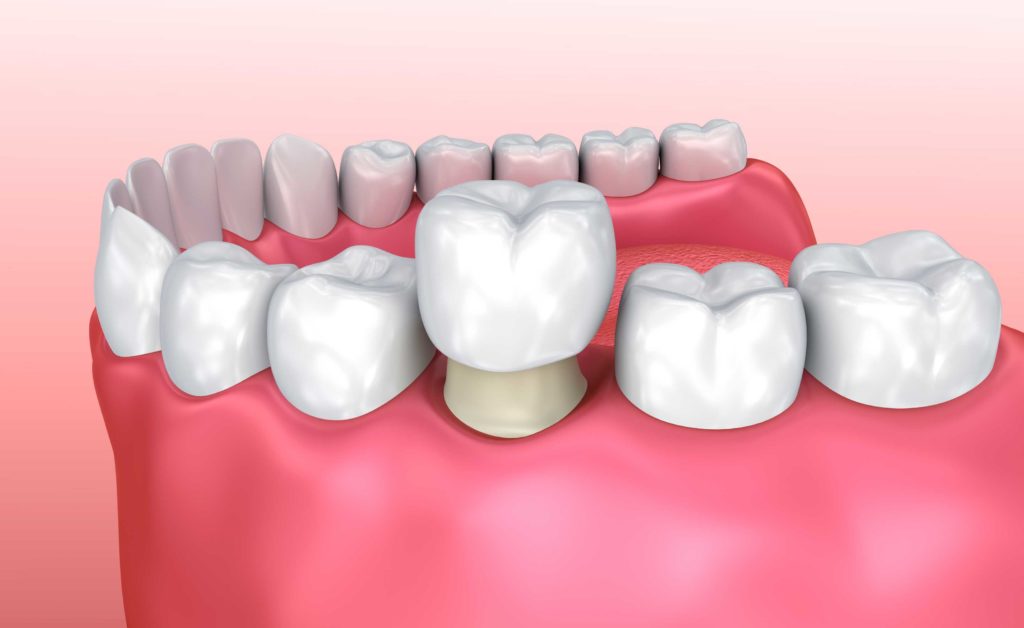
If you’ve recently gotten a dental crown or will be getting one soon, you’ve had damage to your teeth that was too severe to be repaired with a simple dental filling. Dental crowns are a great way to restore your tooth’s strength and appearance for many years. But it’s not uncommon to have a bit of lingering pain soon after the procedure is done, particularly if you’re still wearing a temporary crown. Fortunately, the pain usually goes away on its own within a few weeks, but there are some great at-home options you can use in the meantime. Learn more below!
Why Does Your Tooth Still Hurt?
Your teeth have three layers: Enamel is the hard outer layer, dentin is the softer middle layer, and the center of the tooth contains the nerve and blood supply. When a tooth is damaged by a cavity or fracture, a dentist will recommend treatment based on how much of each layer is affected.
When most of the outer layers have been damaged but the nerve is still intact, dental crowns are usually recommended. However, even if the nerve isn’t directly affected, a cavity may have gotten close enough to “irritate” it. This one potential reason for lingering pain after a crown procedure. Oftentimes, a sensitive nerve simply needs a little time to heal, which can take several weeks.
Also, sometimes sensitivity can occur if the bite is off. In these cases, a dentist can easily adjust the crown to correct your bite and relieve the discomfort.
At-Home Ways To Relieve Pain
If you have pain after getting a crown, there are several options from most drugstores to manage it at home. But if these remedies don’t work or you have pain that lasts longer than a couple of weeks, be sure to call your dentist for an evaluation:
- Over-the-counter pain medication – NSAIDS (non-steroidal anti-inflammatory drugs) include ibuprofen, naproxen sodium, and aspirin.
- Salt water – Everyone has salt around the house, and swishing with salt water every few hours is a safe and effective way to relieve pain. To mix it, put about a ¼ teaspoon of salt into a glass of lukewarm water and dissolve.
- Clove oil – Clove oil has anesthetic (numbing) effects but it’s quite strong, so be sure to use it very sparingly. A small amount on a cotton swab goes a long way.
- Wearing a nightguard – In some cases, sensitivity is the result of pressure from nighttime clenching and grinding. Although you can’t always address the clenching and grinding itself, wearing a nightguard will protect your newly treated tooth from damage.
Also, one note on oral hygiene: If you’re wearing a temporary crown, it’s important to keep the area clean by brushing and flossing, but remember to be gentle. In fact, it’s a good idea to pull the floss out sideways instead of vertically to avoid loosening your temporary crown.
With these guidelines, you’ll be able to handle any potential discomfort while wearing a temporary or in the first few weeks after your permanent crown is placed.
About the Author
Dr. Gary Chaffee has over four decades of experience as a dentist and is a graduate of the Loma Linda University School of Dentistry. After providing dental treatment, he always reviews at-home instructions to minimize the chances of post-procedure pain. If you have any questions about dental crowns or how to use at-home remedies for pain, he can be reached via his website.
